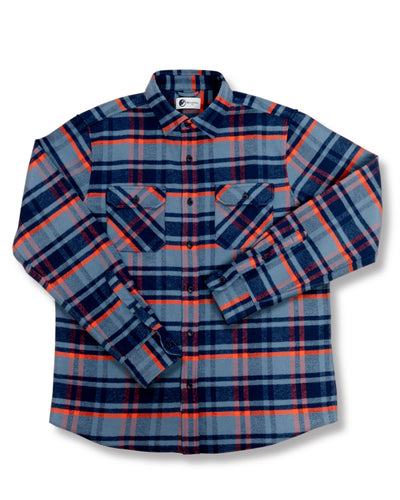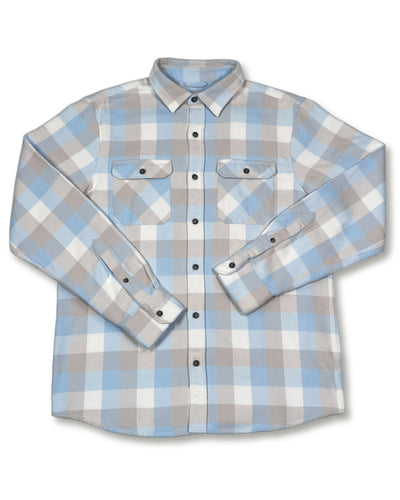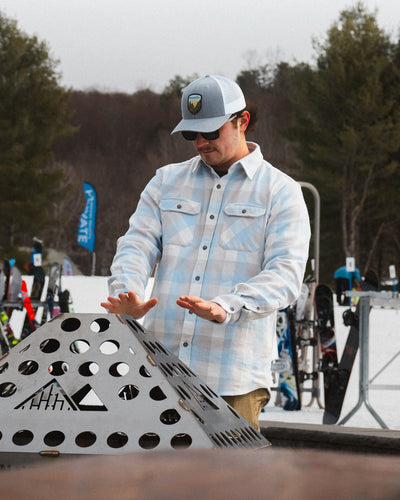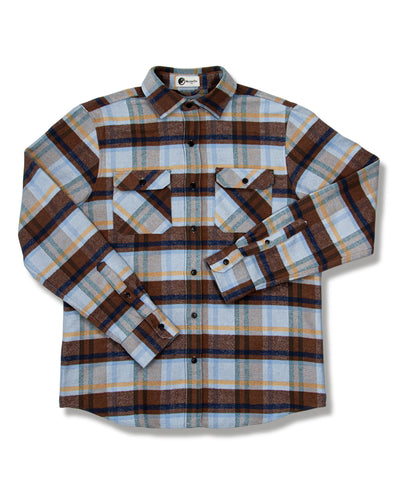Spotting The Difference: Muskoxen vs Bison

They’re hairy, horned, and built like tanks — but don’t be fooled. Learn the wild truth behind muskoxen and bison, told by Norwegian Muskox Safari Guide, Kaspar Rønningen, @Kaspar Rønningen.
 Photo of Bison by Kaspar Rønningen, @kaspar.ronningen
Photo of Bison by Kaspar Rønningen, @kaspar.ronningen
In the vast and rugged landscapes of the northern hemisphere, two shaggy, horned mammals often draw comparisons — bison and muskoxen. At first glance, they might seem similar: both are large grazers, covered in thick fur and equipped with powerful horns. But look a little closer, and you’ll see just how different these two remarkable animals really are.
From their appearance to their evolutionary roots, here’s a breakdown of what sets muskoxen and bison apart.
Size and Appearance
Bison
Size: Larger overall, with males weighing up to 1,000 kg (2,200 lbs).
Appearance: They have a pronounced hump on their shoulders and a shaggy mane. Their horns are short and curve upward.
The humps size varies on species and are less pronounced in the European Bison (Wisent). Out of the American subspecies, the wood bison has a more rectangular hump, straighter hair on their head, and are larger overall. The plains bison have more curly hair on their head, a rounder hump, and typically weighs less than the wood bison but slightly more than the wisent.
Tail: Longer than that of muskoxen, with a tuft of hair at the end.


Muskox
Size: Smaller, males typically weigh up to 400 kg (880 lbs).
Appearance: Known for their dense, woolly coat, which protects them from extreme cold. Their horns curl sharply downward and outward before rising up and curling towards the head. The males sport a horn “boss” which is formed by the base of the horns growing tightly together to form a large plate, which is used for ramming.
Tail: Very short, hidden by their thick fur.

 Photos of Muskoxen in Natural Habitat by Kaspar Rønningen, @kaspar.ronningen
Photos of Muskoxen in Natural Habitat by Kaspar Rønningen, @kaspar.ronningen
Habitat and Range
Bison
Habitat: Bison primarily inhabit expansive grasslands, open prairies, and sparse woodlands. They rely on these vast ecosystems for grazing, as their diet mainly consists of grasses, herbs, shrubs, and twigs. Their habitat supports their migratory behavior, which is often influenced by the changing availability of forage. Bison can endure various climates, but they prefer temperate regions that provide an abundance of open space and vegetation.
 Photo of American Bison at Yellowstone National Park
Photo of American Bison at Yellowstone National Park
American Bison: Historically widespread across North America, from the Great Plains to the eastern forests and even parts of Mexico and Canada. Today, conservation efforts have helped stabilize bison populations, which are now mainly found in protected areas like Yellowstone National Park in the U.S. and reserves in Canada.
European Bison (Wisent): Found in the forests and open areas of Europe and parts of Asia. After being nearly driven to extinction, the wisent has been successfully reintroduced into several countries, including Poland, Belarus, and Russia, often in forested national parks and reserves.

 Photos of European Bison by Kaspar Rønningen, @kaspar.ronningen
Photos of European Bison by Kaspar Rønningen, @kaspar.ronningen
Muskox
Habitat: Muskoxen are well-adapted to life in the Arctic tundra, thriving in harsh, cold climates with rocky terrain and sparse vegetation. They are particularly suited for tundra regions where grasses, mosses, and lichens dominate the landscape. Their dense, insulating coat allows them to survive extreme temperatures, often plummeting below freezing. Muskoxen are also found in regions where permafrost dominates, offering rugged terrain that protects them from predators.
Range: Native to the Arctic regions, muskoxen are primarily found in Canada’s Arctic Archipelago and Greenland. They have also been successfully introduced to other regions, including Norway, Alaska, Sweden, and Russia. Their range is characterized by frigid climates and barren environments that remain snow-covered for much of the year.
 Photo of Muskoxen in Winter Storm
Photo of Muskoxen in Winter Storm
Bison
Evolutionary Lineage: Bison belong to the genus Bison, a member of the Bovidae family, which encompasses a wide variety of hoofed mammals such as domestic cattle, buffalo, antelope, and goats. Bison are thought to have evolved around two million years ago in Asia and later migrated into North America via the Bering Land Bridge during the Pleistocene epoch. Over time, two main species of bison emerged: the American Bison (Bison bison) and the European bison, or wisent (Bison Bonasus).
Close Relatives: Within the Bovidae family, Bison are closely related to other cattle species, such as domestic cows (Bos Taurus) and water buffalo (Bubalus Bubalis). Their shared evolutionary traits include being ruminants, which means they have a specialized stomach with multiple chambers to facilitate the digestion of tough plant materials like grasses. Despite their distinct appearances, these species are all part of the subfamily Bovinae, highlighting their common evolutionary origin.
 Photo of European Bison by Kaspar Rønningen, @kaspar.ronningen
Photo of European Bison by Kaspar Rønningen, @kaspar.ronningen
Muskox
Evolutionary Lineage: Muskoxen belong to the genus Ovibos within the Bovidae family. They evolved approximately one million years ago and have adapted remarkably well to extreme Arctic conditions. Despite their physical resemblance to bison in terms of their bulky build, muskoxen share a closer genetic lineage with the Caprinae subfamily, which includes sheep and goats. Their name, "muskox," is somewhat misleading, as their evolutionary history has more in common with species adapted to rugged, high-altitude or cold environments like wild sheep (Ovis) and mountain goats (Oreamnos).
Close Relatives: As members of the subfamily Caprinae, muskoxen are more closely related to goats and sheep than to bison or other members of the Bovinae subfamily. Their evolutionary adaptations include their dense, insulating coat (qiviut) and their ability to survive on sparse, tundra vegetation, traits they share with other arctic and mountainous Caprinae species such as the ibexes of Eurasia and the mountain goats of North America.
 Photo of Mountain Goat (Oreamnos)
Photo of Mountain Goat (Oreamnos)
Summary
Bison and muskoxen serve as iconic symbols of the ecosystems they inhabit. While bison are icons of the grasslands and prairies with a focus on mobility and migration, muskoxen are Arctic specialists designed for survival in extreme cold. Both species have been subjects of dedicated conservation efforts due to their importance in maintaining ecological balance and cultural heritage. Both are fascinating species with unique adaptations that suit their environments perfectly.

























